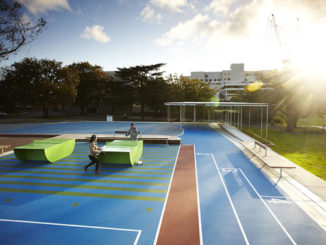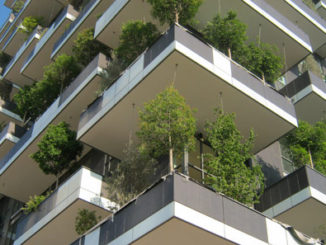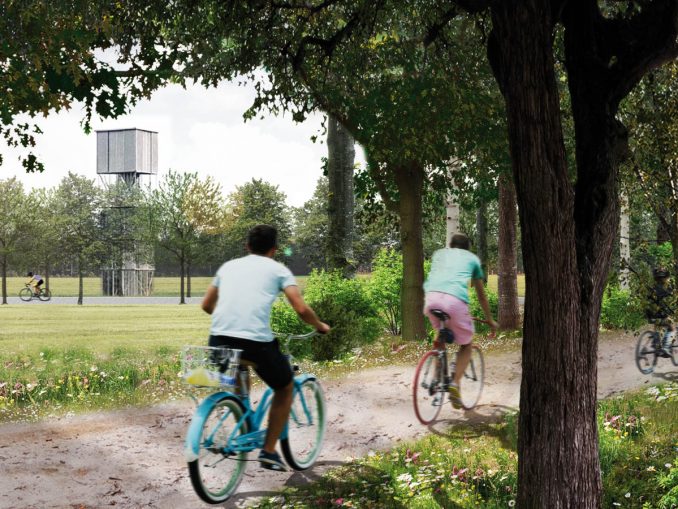
The Netherlands has great ambitions to increase the forest area. Where these forests can be realized and what these forests will look like is unclear. In this study, Flux landscape architecture researched how forests can be realized in the Heuvelrug area. The starting point of the spatial vision is to give an insight into how the planting of new forests or forest structures can contribute to the largest tasks that are going on at the Heuvelrug.
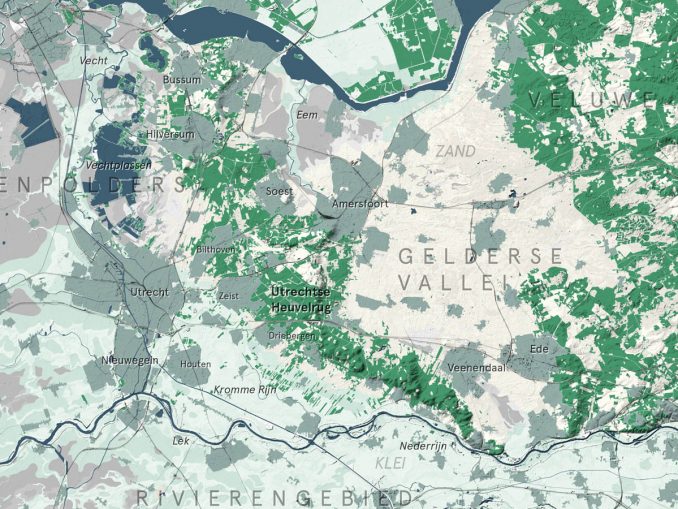
The Utrechts Heuvelland lies in the middle of the Netherlands and has a long history of occupation and exploitation. The Netherlands was, some millennia ago, much more forested than it is now, but the Heuvelrug and its surrounding areas have been deforested during the Middle Ages and turned into meadows, arable lands and vast stretch of moorland. Only the estates had a forested area. By reforestation, a monoculture of large plots of pine forest was planted on the higher sandy soils. Nowadays, the Utrechtse Heuvelrug is a popular recreational area and an important nature reserve. With this and the historical developments, the area is dealing with great challenges.
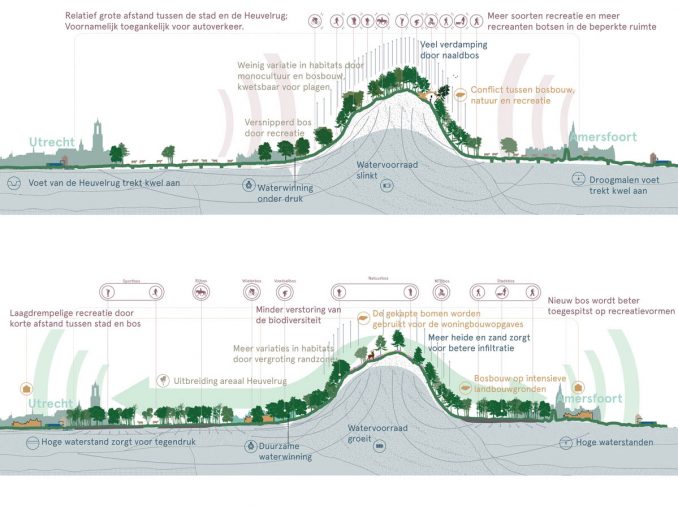
Challenges originate from too large pressure on a too-small forest area. There is a large pressure on recreation, and biodiversity suffers from the monoculture of pine forests. The solution can be found in enlarging the system and improving the system. New forests on the tops, sides, and foot of the Heuvelrug, can contribute in different ways to the challenges. Forests in the wetter edges can, for example, retain water and transform into more productive areas of the forest. Expanding the forest at the edges of the Heuvelrug can spread recreation and create large areas with a diversity of habitats for flora and fauna.
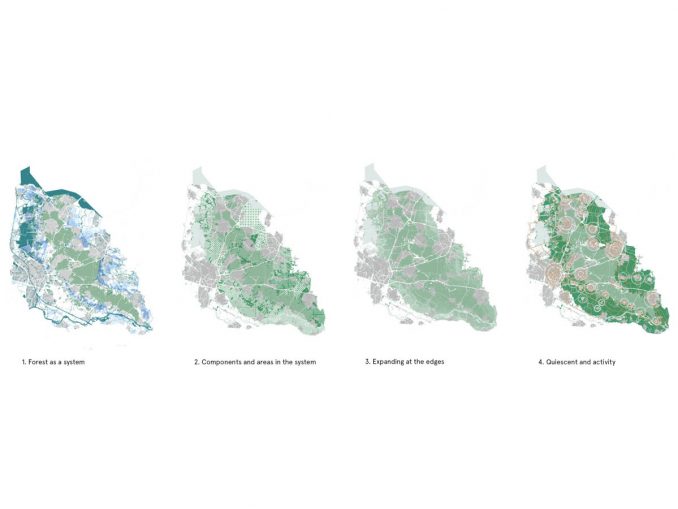
The increasing of the forest area of the Utrechtse Heuvelrug can be done with four spatial principles. The first priciple is to look at the Heuvelrug as a system, including top, sides, and edges of the area. A good understanding of natural processes (e.g. subsoil water flows) and their human impact (e.g. agriculture and urbanization).
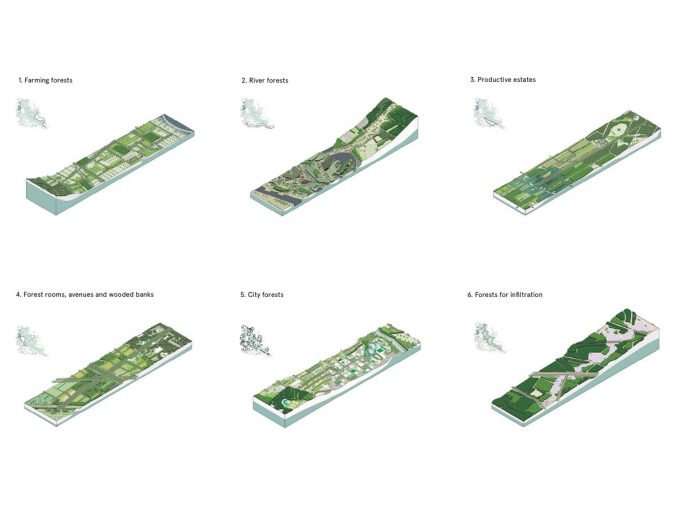
The second principle shows the importance of different components and areas in the system. As large as the variety is in the different areas, as large is the number of forest-types that fit in these parts.
The third principle is the expansion of the forest area from the existing forest on the Heuvelrug.
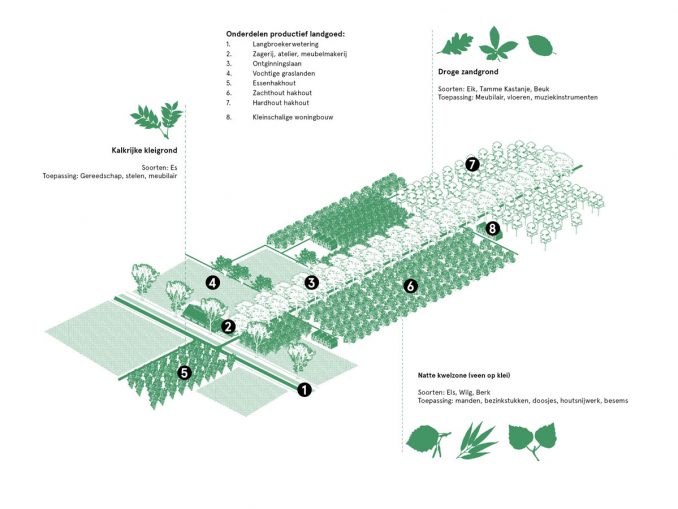

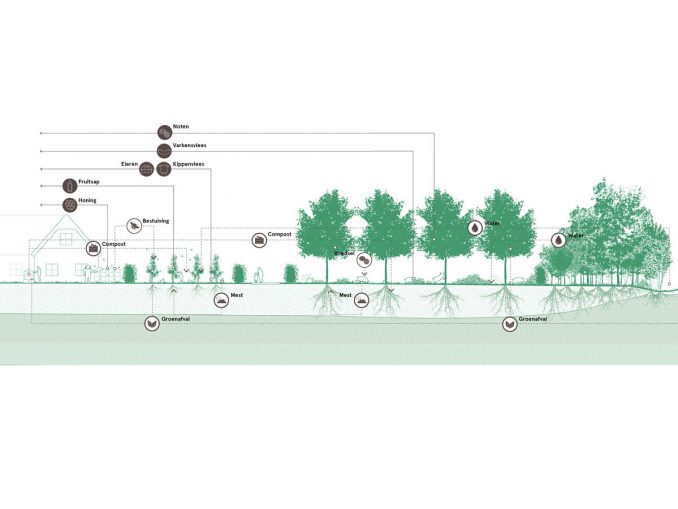
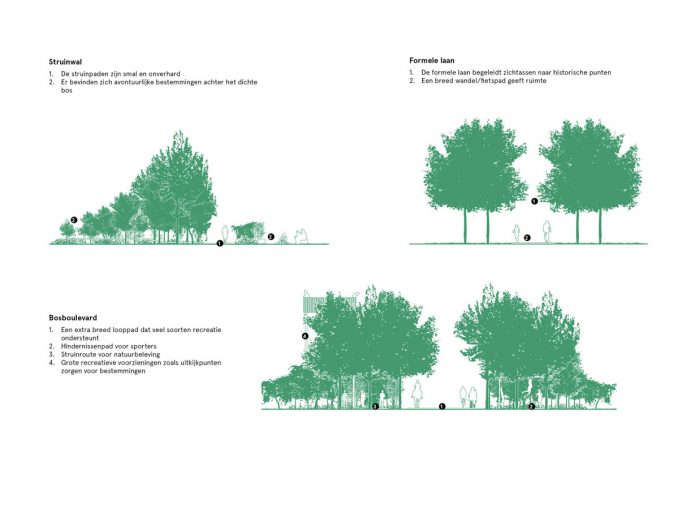
The fourth principle concerns better zoning of the Heuvelrug. The edges offer room for activities of recreation and production and the Heuvelrug itself offers rest for nature. Expanding the forest area on the Heuvelrug means a change from forest areas only on the poor, dry sandy soils to diversity in conditions of the Utrechtse Heuvelland. In this way, a patchwork of new forest types can arise, and each is productive in its local context. To research the diversity of new types of forest, six new forests-types will be introduced.
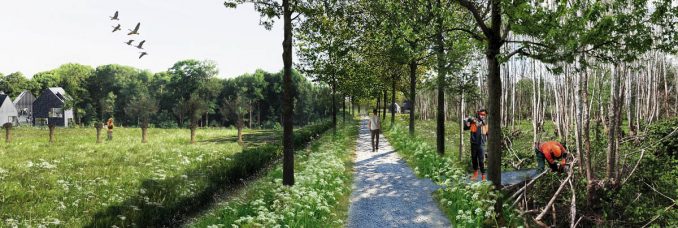
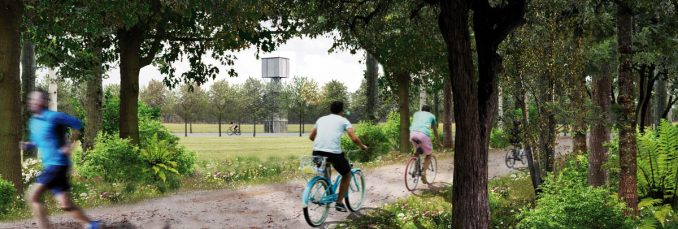

Utrechts Heuvelland | Utrecht, Netherland | Flux Landscape Architecture
Project Name: Utrechts Heuvelland
Landscape Architect: Flux landscape architecture
Client: Nationaal park Utrechtse Heuvelrug, Municipality of Amersfoort en Provinciaal adviseur ruimtelijke kwaliteit provincie Utrecht Paul Roncken
Image Credits: Flux Landscape Architecture


